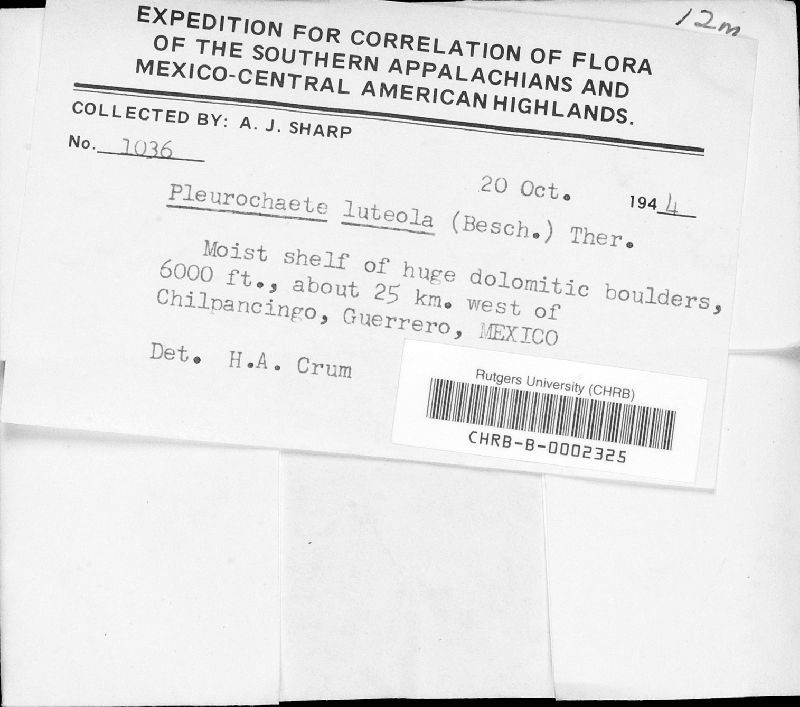
|
|
|
|
Family: Pottiaceae
|
Cauline leaves (2-)3-4.5 mm; basal hyaline marginal band regularly sharply and irregularly denticulate distally, extending 1/2-3/4 the length of the leaf, evident on leaves on dry stems as a shining, undulate area above the edge of the subtending leaf, depauperate stems with leaves to 2 mm show the hyaline band to at least 1/4 the leaf length, and usually on some leaves nearly 1/2; hyaline cells of band smooth distally, the cells elongate and becoming short-rectangular distally; longest median basal cells 7-10:1; median laminal cells ca. 7 µm wide, quadrate. Not fruiting in the flora area. Exposed clay or sandy soil over calcareous rock, especially in cedar barrens or glades, dry bluffs, ledges; low to moderate elevations; Ala., Ariz., Ga., Miss., Mo., N.Mex., Okla., Tenn., Tex., Va.; Mexico; West Indies (Cuba, Dominican Republic, Haiti); Central America (Guatemala); South America (Colombia, Ecuador, Peru). The length of the limbidium does not generally correlate with stem robustness or leaf length, as discussed by various authors, such as E. B. Bartram (1949), although it is naturally shorter in depauperate material, extensively displayed in Texas specimens with stems and leaves of low stature. Undulations in the leaf base proximal to the limb may give the appearance of a leaf shoulder, but there is no abrupt narrowing of the leaf in this region, as there is in Pseudosymblepharis, which narrows abruptly here, forming a shoulder above the clasping leaf base. Both genera display porose basal cells, near the costa, but in Pleurochaete this feature is not as conspicuous. In Texas, both definitive P. luteola and large series of depauperate specimens occur. The latter were all in exposed situations on open soil, and the limbidium was indeed relatively short on these very short-stemmed and short-leaved specimens (1/4-1/2 the leaf length). Still, these specimens, although the most reduced in typical New World characters, have stronger borders than typical material of P. squarrosa from the Old World.
|
This project was made possible in part by the Institute of Museum and Library Services [MG-70-19-0057-19].
Powered by Symbiota



